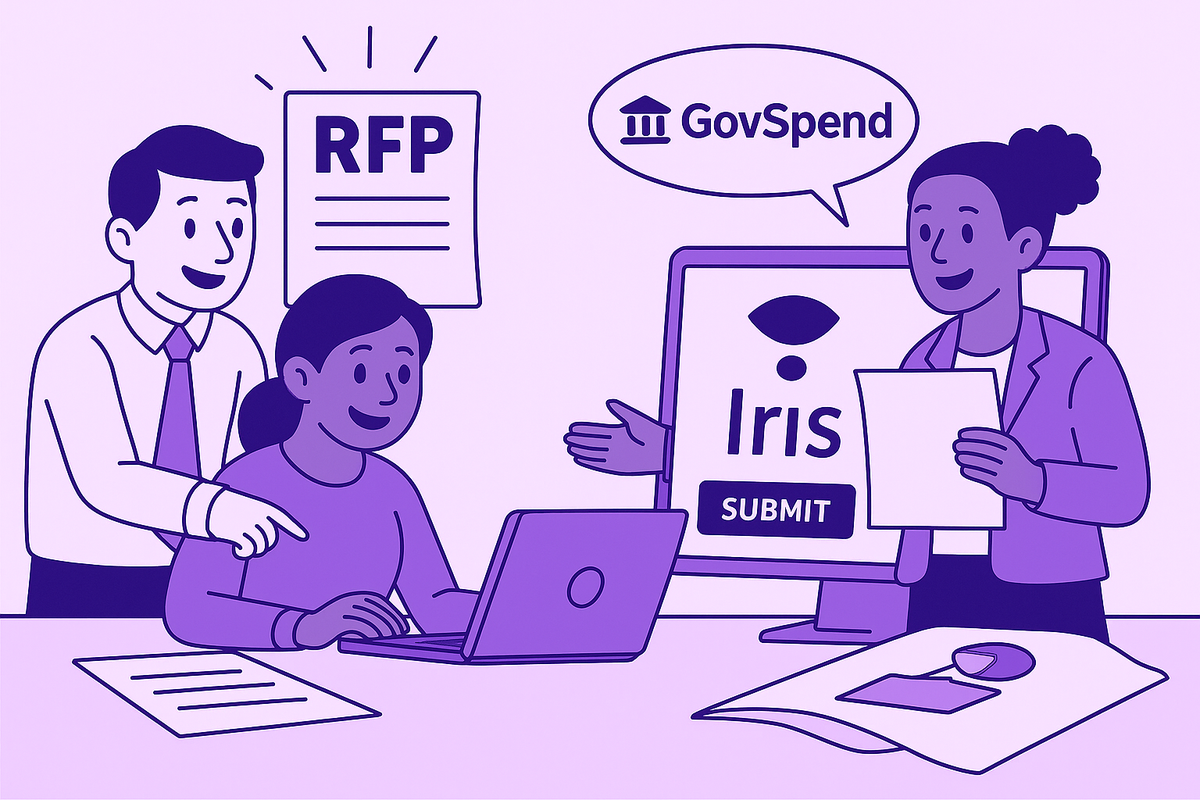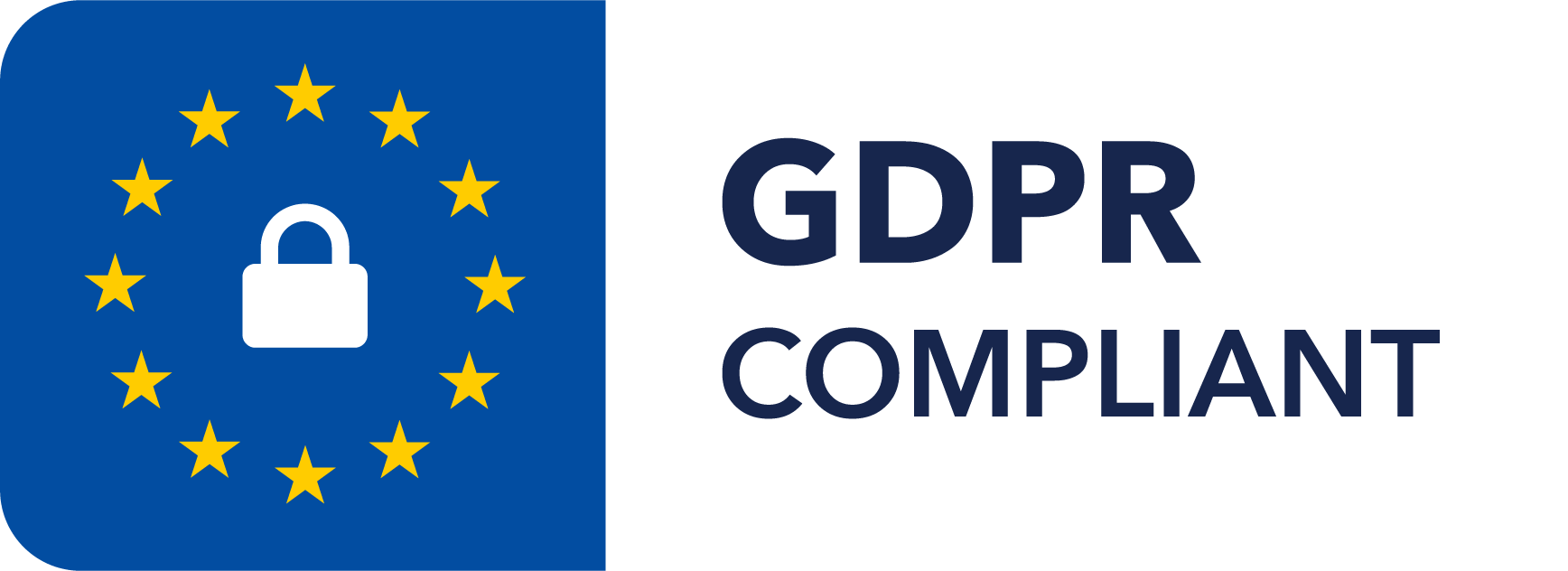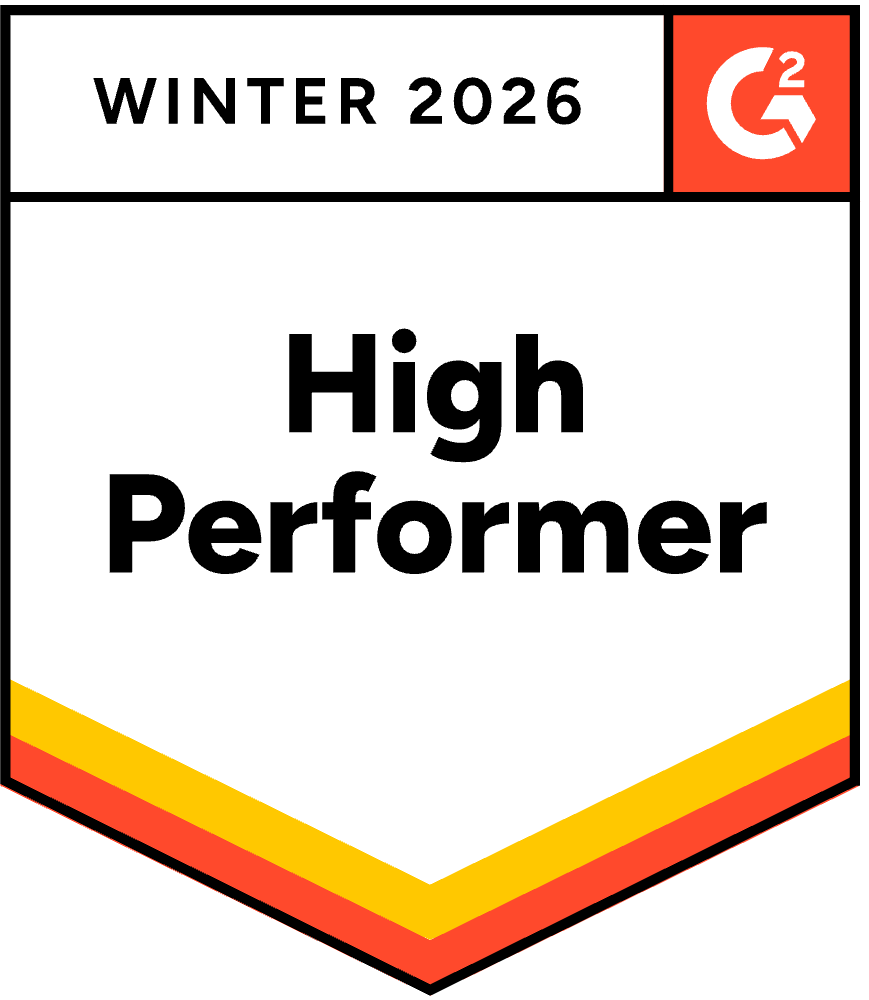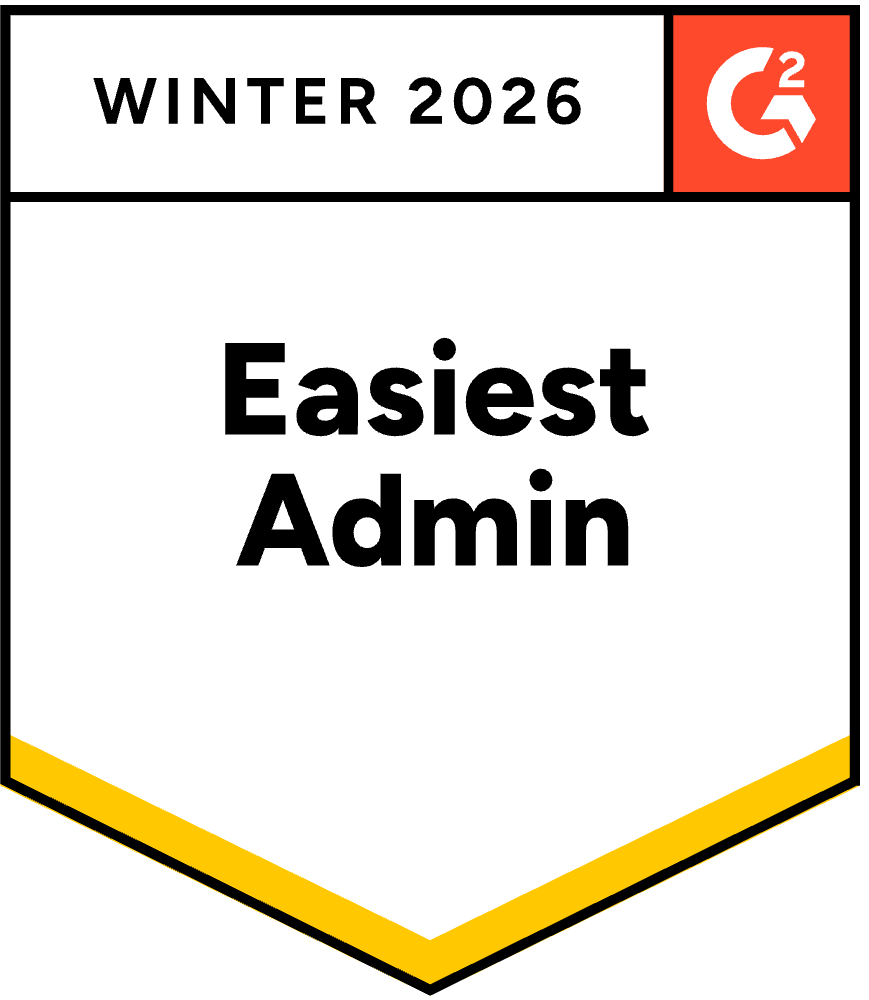RFQ Automation: Win More Deals in Less Time
August 6, 2025
By
Evie Secilmis
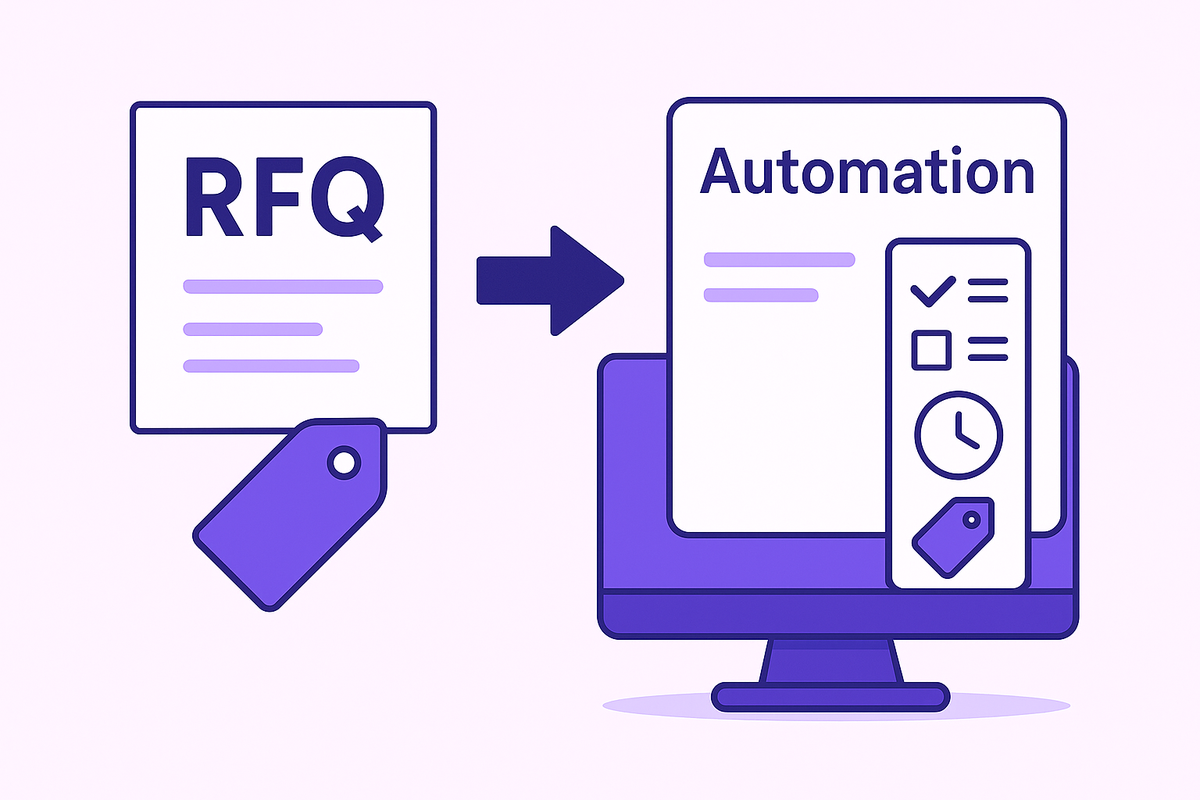
RFQ Automation: How It Works and Why It Matters
Managing a traditional Request for Quote (RFQ) can feel like drowning in details. You're juggling countless emails, phone calls, and messy spreadsheets. It’s a time-consuming process that often pulls your team away from high-impact work. This is precisely where RFQ automation steps in. By using software to streamline the entire workflow, you can turn a complex task into a simple, efficient one. An automated RFQ system doesn't just save hours; it gives your team the space to focus on strategic decisions and secure better outcomes.
How Does RFQ Automation Work?
RFQ automation software digitizes the entire process, from creating and sending RFQs to receiving and evaluating supplier bids. With automation, all the necessary steps are handled by the software, which reduces manual tasks and minimizes human error. It also ensures that all stakeholders have access to real-time information, enabling faster decision-making. The software can integrate with existing systems to provide a seamless flow of information, enhancing the accuracy and speed of procurement activities.
Moreover, RFQ automation often includes features like automated reminders and notifications, ensuring that no deadlines are missed. It provides procurement teams with dashboards and analytics tools to track the status of RFQs and gain insights into supplier performance. These capabilities help organizations to optimize their procurement strategies, ultimately leading to more competitive and effective procurement operations.
Connect Your Systems to Break Down Data Silos
One of the biggest hurdles in procurement is having information scattered across different platforms, emails, and spreadsheets. RFQ automation software breaks down these data silos by bringing everything into one central hub. It digitizes the entire process, from creating the request to evaluating the final bids. This integration significantly reduces tedious manual tasks and the risk of human error that comes with juggling so much information. When all stakeholders can access real-time information, it empowers your team to make faster, more informed decisions instead of spending valuable time just trying to get on the same page.
Standardize Quotes for Apples-to-Apples Comparisons
Trying to compare supplier quotes that arrive in different formats can feel like solving a puzzle. One vendor sends a PDF, another an Excel sheet, and a third puts everything in the body of an email. Automation makes this process much smoother by standardizing how you receive and view information. The software can pull key details from each bid and organize them into an easy-to-compare format, like a side-by-side table. This removes the need for manual data entry and helps you analyze multiple quotes at once, ensuring you’re making a true apples-to-apples comparison every time.
Create a Seamless Flow from Request to Purchase Order
The work isn’t over once you’ve selected a vendor. The next step—creating and sending a purchase order—can be another manual, multi-step process that opens the door for delays. With an automated system, an approved quote can automatically trigger the creation of a purchase order. The PO is then sent to the chosen vendor and logged in your company’s system, like your ERP. This creates a clear, auditable trail from the initial request all the way to payment. It keeps the procurement cycle moving without any unnecessary friction or administrative bottlenecks, ensuring a smooth handoff from sourcing to purchasing.
Make It Easy for Suppliers to Respond
A complicated submission process can discourage even the best suppliers from bidding. If they have to jump through hoops just to send you a quote, they might decide it’s not worth their time. The best RFQ automation tools simplify the experience for your vendors, too. Instead of wrestling with email attachments and specific formatting rules, suppliers can get a simple link to an online portal where they can upload their quotes directly. This ensures you don’t miss any submissions lost in an inbox and makes it easier for vendors to do business with you, which ultimately leads to more competitive and higher-quality bids.
Why Automate Your RFQ Process?
RFQ automation offers a multitude of benefits that can significantly improve procurement efficiency and effectiveness, making it a valuable asset for any organization looking to enhance their procurement operations.
Get More Done in Less Time
One of the primary benefits of RFQ automation is the increased efficiency it brings to the procurement process. By automating repetitive tasks, procurement teams can focus on more strategic activities, such as supplier relationship management and contract negotiations. Automation allows for quicker turnaround times and less bottlenecks in the process, leading to faster procurement cycles and more responsive operations.
Furthermore, the efficiency gained through automation can lead to a more agile procurement function. Teams can quickly adapt to changes in demand or supply conditions, ensuring that the organization remains competitive and responsive to market changes. This adaptability is crucial in today's fast-paced business environment where the ability to respond swiftly can be a significant advantage.
Cut Costs Without Cutting Corners
Automation helps reduce costs by minimizing manual labor and reducing the time spent on processing RFQs. Moreover, automated systems can quickly analyze bids and identify the most cost-effective options, leading to better pricing and terms. By reducing the risk of human error, companies can avoid costly mistakes and ensure more accurate financial planning and budgeting.
In addition, RFQ automation can also lead to indirect cost savings through better supplier relationships and improved compliance with contract terms. By having a more streamlined and transparent process, organizations can negotiate better terms and avoid penalties associated with non-compliance. Overall, the cost savings achieved through RFQ automation can have a significant impact on the bottom line.
Say Goodbye to Costly Manual Errors
Manual RFQ processes are prone to errors, such as data entry mistakes or miscommunications. Automation reduces these risks by ensuring that data is consistently captured and shared across all platforms. This leads to more accurate and reliable information, helping procurement teams make better decisions. By eliminating discrepancies in data, organizations can enhance the quality of their procurement decisions and outcomes.
With improved accuracy, procurement teams can also increase their credibility within the organization. Accurate data and reporting can lead to better collaboration with other departments and a greater alignment with overall business objectives. This accuracy fosters trust and confidence in the procurement function, enabling it to play a more strategic role within the organization.
Build Stronger Supplier Relationships
RFQ automation can improve supplier relationships by providing suppliers with a more streamlined and transparent process. Suppliers appreciate the efficiency and clarity that automation brings, which can lead to better collaboration and trust. With more efficient communication and reduced administrative burdens, suppliers are more likely to engage positively and proactively with the organization.
Moreover, enhanced supplier relationships can lead to better terms and conditions, as well as access to innovations and insights from suppliers. By fostering a collaborative environment, both parties can work towards mutual goals, creating a win-win situation that benefits both the organization and its suppliers. This partnership can drive innovation and lead to long-term strategic alliances.
Stay Compliant and Reduce Procurement Risk
Automation helps ensure that procurement processes adhere to company policies and industry regulations. It also provides a clear audit trail, making it easier to track and manage compliance. Furthermore, automated systems can identify potential risks and alert teams to take proactive measures. This proactive approach to risk management can prevent issues before they arise, protecting the organization from potential legal and financial repercussions.
Additionally, better compliance and risk management through automation can enhance the organization's reputation and credibility. By demonstrating a commitment to ethical and compliant practices, organizations can attract more reputable suppliers and partners. This commitment to compliance can also provide a competitive edge in industries where regulatory adherence is a key differentiator.
The Role of AI in RFQ Automation
While automation handles the workflow, artificial intelligence (AI) adds a layer of intelligence that transforms the entire RFQ process. AI doesn’t just move data around; it understands, analyzes, and learns from it. For sales teams, understanding how your potential customers use AI is key to crafting quotes that stand out and meet their evolving criteria. AI helps procurement teams make faster, smarter, and more strategic decisions, moving far beyond simple price comparisons.
Let AI Read and Understand Your Documents
Think of all the time procurement teams spend manually sifting through documents, pulling out key details, and entering data. AI-powered RFQ automation takes over these tedious tasks. The software uses artificial intelligence to read and comprehend RFQ responses, extracting critical information and organizing it for easy comparison. This not only saves an incredible amount of time but also drastically reduces the risk of human error. For you, this means the clarity and structure of your proposal are more important than ever. When an AI is doing the first pass, a well-organized document that clearly presents all the requested information will always have an advantage, ensuring your key value points are captured accurately from the start.
Evaluate Suppliers Beyond Just Price
In the past, the lowest bid often won. Today, AI allows procurement teams to take a much more holistic approach to supplier evaluation. The software can analyze a wide range of factors beyond just the price tag, including supplier reliability, performance history, and compliance with environmental and social governance (ESG) standards. It can even calculate the total cost of ownership (TCO) to determine the true long-term value of a partnership. This is great news for businesses that compete on quality and reliability. It means you have a better chance of winning bids by highlighting your company's stability, ethical practices, and the lasting value you provide, as these are metrics the AI is specifically looking for.
Spot and Manage Risks Proactively
Supply chain disruptions can be a major headache for any business. AI gives procurement teams a powerful tool for proactive risk management. By analyzing market data, historical trends, and supplier information, AI can identify potential risks—like material shortages or logistical bottlenecks—before they become critical problems. This allows companies to plan ahead, secure alternative suppliers, or adjust their strategies to avoid costly delays. As a supplier, you can turn this into a competitive advantage. Demonstrating a resilient and transparent supply chain in your proposals can be a huge selling point, showing potential clients that you are a stable and reliable partner they can count on, no matter what challenges arise.
Trust Your Answers with Confidence Scores
Ultimately, AI is about making decisions with greater confidence. For procurement teams, this means relying on data-driven recommendations when selecting suppliers, rather than just gut feelings. The AI analyzes past performance and market data to suggest the best partners for the job. On the other side of the table, your sales team needs that same level of assurance. When you respond to a complex RFQ, you need to trust that your answers are accurate and compelling. This is where an AI-powered platform like HeyIris.ai becomes invaluable, providing confidence scores that verify your information is up-to-date, so you can submit every proposal with complete certainty.
Your Toolkit for RFQ Automation
When considering RFQ automation, several tools can help streamline the process and deliver the benefits mentioned above. Choosing the right tools is crucial to fully leverage the advantages of automation and ensure seamless integration with existing systems.
Start with Smart RFQ Templates
RFQ templates provide a standardized format for creating and sending RFQs. These templates ensure consistency and make it easier for suppliers to respond. Many RFQ automation tools offer customizable templates that can be tailored to meet specific business needs. By using templates, organizations can ensure that all RFQs contain the necessary information and follow a consistent structure, reducing misunderstandings and improving response rates.
Furthermore, templates can be designed to capture specific data points that are critical to the organization's procurement strategy. This customization allows for more targeted and effective RFQs, leading to better supplier responses and more informed decision-making. Templates also facilitate training and onboarding of new team members, as they provide a clear and consistent process to follow.
Go Cloud-Based for Easy Access
Cloud-based RFQ platforms offer a centralized location for managing all RFQ activities. These platforms enable real-time collaboration and communication between procurement teams and suppliers, making the entire process more efficient and transparent. With cloud-based solutions, all stakeholders can access the same information from any location, ensuring that everyone is on the same page.
Additionally, cloud-based platforms offer scalability and flexibility, allowing organizations to adjust their RFQ processes as their needs change. These platforms often come with advanced security features, ensuring that sensitive data is protected. By leveraging the power of the cloud, organizations can enhance their procurement operations and respond more effectively to market demands.
Connect Your Systems for a Seamless Workflow
Integrated procurement systems combine RFQ automation with other procurement functions, such as purchase order management and supplier performance tracking. This holistic approach provides a comprehensive view of the procurement process and helps teams make data-driven decisions. By integrating RFQ automation with other systems, organizations can enhance visibility and control over their entire procurement cycle.
Moreover, integrated systems can provide advanced analytics and reporting capabilities, offering insights into procurement trends and supplier performance. These insights can drive strategic decision-making and lead to continuous improvement in procurement processes. By having a unified view of procurement activities, organizations can align their procurement strategies with overall business objectives, driving greater value and efficiency.
Your Game Plan for Implementing RFQ Automation
To maximize the benefits of RFQ automation, it's essential to follow best practices during implementation. By adhering to these practices, organizations can ensure a smooth transition and achieve the desired outcomes from their automation efforts.
First, Define What Success Looks Like
Before implementing RFQ automation, it's crucial to define clear objectives. Determine what you want to achieve with automation, such as reducing processing time, improving accuracy, or enhancing supplier relationships. Having clear goals will help guide the selection and implementation of the right tools and processes. These objectives should align with the organization's overall procurement strategy and business goals.
Clear objectives also provide a benchmark for measuring the success of the automation initiative. By setting specific and measurable goals, organizations can track progress and make data-driven decisions to optimize their procurement processes. This clarity of purpose can ensure that all stakeholders are aligned and focused on achieving the desired outcomes.
Get Your Team on Board
Successful RFQ automation requires buy-in from all stakeholders, including procurement teams, suppliers, and IT departments. Engage these groups early in the process to ensure their needs are addressed and to gain their support for the transition. By involving stakeholders from the outset, organizations can identify potential challenges and develop strategies to address them.
Engaging stakeholders also fosters a sense of ownership and collaboration, which is crucial for the success of any automation initiative. By ensuring that all parties are invested in the outcome, organizations can facilitate a smoother implementation and achieve better results. Regular communication and feedback loops can help maintain stakeholder engagement and support throughout the process.
Find the Right Tech for Your Team
Selecting the right RFQ automation tools is critical to achieving your objectives. Consider factors such as ease of use, integration capabilities, and scalability when evaluating potential solutions. Additionally, look for tools that offer robust support and training resources to ensure a smooth implementation. The right tools should align with the organization's existing systems and processes, minimizing disruption and maximizing efficiency.
Moreover, organizations should consider the long-term implications of their tool choice, ensuring that the solution can adapt to future needs and challenges. By selecting a flexible and scalable solution, organizations can future-proof their procurement processes and remain competitive in a rapidly changing market.
Build a Central Library for Approved Answers
Think about how much time your team spends tracking down the same information for every new RFQ. A quality automation tool puts an end to that cycle by helping you build a central library—a single source of truth—for all your approved answers, product specs, and company details. This feature stops your team from answering the same questions over and over again. Instead of starting from scratch, they can pull from a pre-vetted knowledge base, ensuring every quote that goes out is consistent, accurate, and on-brand. This not only speeds up the process but also reduces the risk of someone using outdated or incorrect information, giving you confidence in every submission.
Ensure Pricing Accuracy with Historical Data
Quoting prices can often feel like a shot in the dark, but it doesn’t have to be. The right software gives you the power to learn from your own history. It should help you find correct pricing from similar past requests and adjust it for new ones. By analyzing your historical data, you can see what you quoted before, how the project scopes differed, and most importantly, which responses led to winning deals. This data-driven approach removes the guesswork from pricing. It allows you to create competitive yet profitable quotes based on proven success, giving your team a strategic edge in every negotiation.
Look for Real-Time Collaboration Tools
If your current RFQ process involves endless email chains and confusion over document versions, it’s time for an upgrade. Modern automation platforms are built for teamwork. You should look for tools where your team can work together instantly, see changes as they happen, and easily assign tasks to subject matter experts. This eliminates bottlenecks and keeps the entire process moving smoothly. When everyone can collaborate within a single platform, you get a transparent workflow where accountability is clear, and deadlines are met without the last-minute scramble. It’s about making teamwork simple and effective for everyone involved.
Check for Key Integrations with Your Existing Tools
A new tool should fit into your workflow, not disrupt it, which is why integrations are non-negotiable. Before you commit to a platform, make sure it connects with the other software you already rely on, like your CRM, Slack, or Microsoft Teams. This allows your team to work comfortably in their usual digital environments while still getting the benefits of automation. A seamless integration means data flows freely between systems, reducing manual data entry and ensuring everyone has access to the most current information without having to constantly switch between applications.
Track Your Progress and Adjust as You Go
Once your RFQ automation system is in place, continuously monitor its performance and gather feedback from users. Use this information to make necessary adjustments and optimizations, ensuring that the system continues to deliver maximum value. Regular monitoring allows organizations to identify areas for improvement and implement changes proactively.
Optimization should be an ongoing process, with organizations continually seeking ways to enhance their RFQ automation efforts. By leveraging data and insights, organizations can refine their processes and drive continuous improvement. This commitment to optimization can lead to sustained success and a competitive advantage in the marketplace.
Set Your Team Up for Success
Proper training is essential to ensure that your team can effectively use the RFQ automation tools. Provide comprehensive training sessions and ongoing support to help team members adapt to the new system and maximize its benefits. Training should be tailored to the needs of different user groups, ensuring that everyone has the skills and knowledge required to succeed.
In addition to initial training, organizations should offer continuous learning opportunities to keep teams updated on new features and best practices. By investing in training and development, organizations can empower their teams to leverage RFQ automation to its full potential, driving greater efficiency and effectiveness in procurement operations.
Ready to Automate Your RFQ Process?
RFQ automation is a powerful tool that can transform the procurement process, offering increased efficiency, cost savings, and improved supplier relationships. By understanding the benefits, tools, and best practices associated with RFQ automation, organizations can make informed decisions and successfully implement these systems. Embrace RFQ automation to stay competitive in today's fast-paced business environment and unlock the full potential of your procurement process.
In conclusion, RFQ automation represents a significant opportunity for organizations to enhance their procurement operations and achieve strategic objectives. By implementing the right tools and following best practices, organizations can realize the full benefits of automation and drive greater value for their business. As the procurement landscape continues to evolve, RFQ automation will play an increasingly important role in shaping the future of procurement.
Frequently Asked Questions
What’s the real difference between standard RFQ automation and AI-powered automation? Think of standard automation as a great workflow manager. It handles the repetitive tasks, like sending out requests, collecting responses in one place, and sending reminders. AI-powered automation does all of that, but it also adds a layer of intelligence. It can actually read and understand the documents, pull out key information for you, and even analyze a supplier's bid based on factors beyond just the price, like their past performance or potential risks.
Is RFQ automation only for large enterprises? Not at all. While large companies with high volumes of RFQs see huge benefits, smaller and growing businesses can gain a serious competitive edge, too. Automation helps smaller teams operate with the efficiency of a much larger department. It frees up your people from getting stuck in administrative tasks so they can focus on building supplier relationships and making strategic decisions that help the business grow.
Will automating our RFQ process replace jobs on my procurement team? This is a common concern, but the goal of automation isn't to replace people—it's to free them from tedious, low-value work. Instead of spending their days manually comparing spreadsheets and chasing down vendors, your team members can focus on more strategic activities. They'll have more time for negotiating better terms, managing supplier relationships, and analyzing data to make smarter purchasing decisions. It allows your team to work at a higher level.
How does this make things better for our suppliers? A complicated submission process can be a major turn-off for your best potential partners. RFQ automation simplifies things for them by providing a clear, centralized portal to submit their quotes. They no longer have to worry about their emails getting lost or formatting their bids in a specific way. This streamlined experience makes it easier for them to do business with you, which encourages more high-quality suppliers to respond.
How much work is it to set up an RFQ automation system? Getting started is more straightforward than you might think. The key is to choose a platform that is user-friendly and integrates with the tools you already use, like your CRM. A good provider will guide you through the setup process. The initial effort involves defining your goals and getting your team comfortable with the new workflow, but the long-term time savings and efficiency gains quickly make that investment worthwhile.
Key Takeaways
- Automate the busywork to focus on strategy: RFQ automation takes over tedious tasks like data entry and quote organization, giving your team the time and space to negotiate better deals and build stronger supplier relationships.
- Use AI to evaluate suppliers beyond price: Modern tools use AI to analyze factors like supplier reliability, performance history, and potential risks, helping you make smarter, data-driven decisions based on long-term value instead of just the lowest cost.
- Choose tech that fits your existing workflow: For a smooth transition, select an automation tool that integrates with your current systems, allows for real-time team collaboration, and helps you build a central library of approved answers.
Related Articles
Share this post
Link copied!



